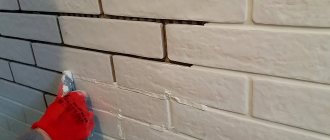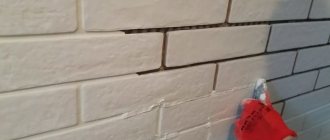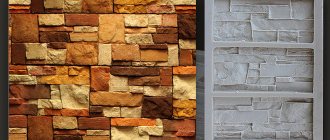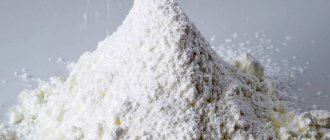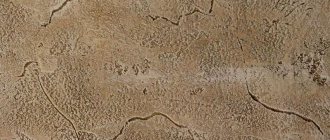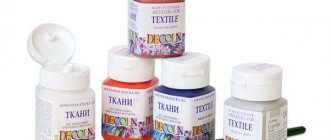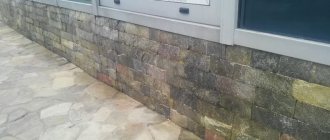Using decorative stone at home, it is possible to create an original and attractive image, but only with precise installation. This will preserve the quality characteristics of the material, as well as achieve maximum aesthetics of the surface. But not only the laying process is important, but also subsequent processing. Grouting joints using a special composition allows you to get a high-quality result that is close to natural, even when working with artificial material.
Attractive finish
Tasks performed by grout
It is necessary to apply jointing agent to a wall made of decorative artificial stone. It carries several tasks:
- completeness of the interior style;
- preventing the penetration of dust and debris;
- timely removal of moisture from seams;
- reducing the risk of cracks;
- protection of gypsum material from temperature changes.
To grout joints, it is not enough to know the tactics of doing the work; it is also important to choose the right type of grout.
White grout for seams between white decorative bricks Source sdelai-lestnicu.ru
What can you make it from with your own hands?
Budget-friendly, but no less high-quality - making a grout (grout mixture) yourself. Initially, you need to know the main types of grouting components:
- Cement mixtures are simple, easy to prepare, cheap, but high-quality material. To make a fugue, you will need to mix cement mixture (you can use white cement), sand and water in equal proportions. Sand is selected to the smallest fraction. A dye or color of the desired decor color is added to the mixture.
- Gypsum fugue - this composition requires skill, as the gypsum sets quickly. The mixture is made in small portions, which do not have time to harden during work. Gypsum is diluted to a semi-liquid state; slaked lime or 2% of any glue of animal origin is added for strength. Such substances will replace the plasticizer, make the fugu less fragile, and increase the hardening time.
- Alabaster mixture is a type of gypsum, only after additional heat treatment. Alabaster powder is diluted with water to a semi-liquid, thick state, you can add dye. In use it is similar to gypsum composition.
- Clay grout - a grout of this material is made from a clay mass with the addition of a small amount of slaked lime and cement. When hardened, the mixture will be very strong.
Advice
You can buy a ready-made grout mixture and modify it, for example, add the desired color and even glitter. If the design requires a transparent seam made of liquid glass or epoxy, then adding shiny elements will make it more impressive.
A fugue made independently is inferior to industrial compositions, but the quality can be similar. Before mashing, you should make sure that the self-made fugue has the necessary qualities or is close to these parameters:
- elastic, easy to fit at seams;
- after drying, it does not crack, does not crumble, and does not fall apart when cared for;
- the setting time of the composition should be equal to the treatment of one square meter of cladding surface;
- for wet rooms, the composition of the fugue must be moisture resistant;
- the grout mixture must withstand washing with household chemicals;
- aesthetics of the composition: the grout must correspond to the idea and overall design of the facing surface.
Types of grout for decorative bricks
Despite the fact that many craftsmen try to seal the seams using the material on which the masonry was made, experts still advise using special grouts for this, which have aesthetic and practical functions. All compositions are usually divided according to form into the following types:
- dry, they need special dilution before use. In this case, it is important to maintain proportions so that the grouting of decorative stone or brick has the desired effect;
- wet (ready-made) - are considered a convenient composition that is immediately ready for use, but tends to harden quickly, so it should be used in portions.
Using grout for narrow joints between gypsum bricks Source business.molenart.pro
Additionally, grout for artificial stone also differs in the material that underlies it. These will be the following compositions:
- gypsum - best suited for finishing decorative gypsum stone, easy to use, suitable only for interior work;
- cement - no less reliable option, additionally classified into coarse- and fine-grained; the design with such compositions gives the surface a natural look;
- silicone - recognized as high quality, have a good level of elasticity and moisture resistance;
- epoxy - compounds that are quite resistant to hot or cold moisture, can be used in the bathroom or kitchen, but have a low polymerization rate;
- polyurethane - have maximum resistance to moisture, do not fade, prevent the formation of stains, and are characterized by rapid drying;
- rubber - such materials are considered quite elastic, like others, they are considered moisture resistant, easy to apply and, if necessary, washed;
- latex - these compounds have increased adhesion, which ensures the penetration of the grout into the depth of the layer.
Please note that depending on the type of grout composition, the application technology to decorative stone masonry may also differ.
Using epoxy grout for joints between decorative stone Source pobudova.in.ua
Briefly about the main thing
Before rubbing the seams on the decorative brick, select a mixture. When selecting it, the composition of the solution and the location of the work are taken into account. The grouting process is carried out using gypsum, silicone, cement, latex, rubber and polyurethane compounds.
I also choose the grouting technology. After all, driving seams can be done using the slurry method, using a syringe gun or spatula. In addition, the method of forming the weld surface is determined. It can have a convex, concave, beveled, triangular shape. It is also made flush with the brick surface.
Ratings 0
Options for applying seams between decorative stones
There are several interesting varieties of how you can decorate seams using grout. We offer several options:
- Flush. One of the simplest methods that an inexperienced builder can handle. The solution is filled into the seams, and its remains are removed with a trowel. When all the cracks are filled and the grout has hardened a little, go over them with a stiff brush.
- Concave. For this purpose, use a special narrow spatula; it should not be very long. After cleaning the gaps, fill the grout with a jointing tool.
- Convex. For this purpose, a special arc-shaped tool is used. To do this, it is leaned against the wall with an arc and the seam is filled. Gradually move the spatula as the seam fragment is filled.
- Rectangular. To do this, first clean up to five millimeters of mortar in the cracks, even if it has frozen. Afterwards, grout is filled into these spaces to the very edge of the gap.
- Beveled. It involves making seams not straight, but at an angle. The approximate cutting angle is 3-5 mm. This effect will be convenient for rooms with high humidity, since water is easily drained through the seams.
Each method of applying grout is not suitable in all cases. For example, a convex one will not look beautiful on a wall with decorative trim in a small room.
Grouting joints between white gypsum decorative bricks Source vash-remontik.ru
What connections should I make?
The most important parameters for determining which seam is required are:
- By color - the grout should be in harmony with the overall composition and color scheme.
- In width - the calculation is made when laying the decorative stone, then the gap itself is filled. This is necessary to calculate the amount of material consumed.
It will be possible to smooth out seams aesthetically and reliably only where construction and finishing standards were initially observed:
- evenness of masonry with equal distance between stones,
- The tiles do not stick out above those lying next to them.
In this case, filling the seams is easy. Construction standards indicate the size of the seam - up to 1 cm, but no more. This will help determine the amount of consumables, for example:
- for a depth and width of 10 mm, you will need from 6 to 8 kg of grout mixture per 1 square meter. m,
- for a standard brick stone measuring 240 by 71 mm, 2.5-3 kg will be needed to process the seams.
When laying, special attention should be paid to the main characteristics of the facing material, since the manufacturers themselves indicate what gap should be left.
Attention: Most mixtures are sold in standard 25 kg bags - this is enough to mash 8-9 square meters. m.
Retainer
Seam fixer is a special solution for working with natural and artificial stone. When facing, it ensures the preservation of gaps of the required size between masonry elements.
Each manufacturer has recommendations for maintaining the gap size and fixing solution. For example:
- for clinker - 10–12 mm,
- for large stones - 15 mm,
- for an irregularly shaped stone - 15–20 mm.
Based on these gap dimensions, manufacturers calculate the consumption rates of stone, grout and fixative.
Retainers are made primarily from extruded polystyrene foam, a flexible, hard material. This is a very useful property when laying artificial stone that has smooth edges.
Top 3 manufacturers of grout for decorative stone
Among the large number of manufacturers, there are only three whose products are of good quality. These include the following brands:
- Ceresit - sold exclusively in dry form; the packaging contains a table showing the proportions of dilution of the product before use;
- Kiilto - the mixture is sold in various shades, so there is no need to select a color; it is considered resistant to temperature changes;
- Mapei - this version of grout fits securely into the seam and does not fall out of it during operation; there is also a translucent version that repels dust and dirt;
Solutions from the listed brands adhere reliably and do not fade over time. The compositions are ideal for gypsum stone and brick and are considered light.
Branded grout for gray joints with added pigment Source nikastroy.ru
Care
Fairly simple care will extend the life of the decorative stone and maintain its attractiveness. To do this, it is enough to provide reliable protection from moisture, as well as regularly clean the surface.
Competent care
Decorative stone is an excellent option to make a building presentable and original both outside and inside. Its correct installation, careful grouting and basic care will allow you to obtain a high-quality finish that will retain its original appearance for many years.
How to save money
In the case when a large part of the wall is decorated with decorative stone, you have to save money. Therefore, it is recommended to follow a few simple tips:
- Dilute the composition in exact proportions; be sure to calculate the amount before starting grouting.
- For wide seams, use a wide spatula, because it can easily remove all the excess sticking out mixture.
- Compact the excess that remains on the spatula into other crevices instead of taking fresh product.
- Try to fill the space between the gypsum stones carefully so that drops of grout do not fall out, because they instantly set and cannot be reused.
It is also recommended to use the technology for jointing decorative artificial stone that seems most economical to you.
Completed grouting of joints between gypsum bricks Source poisk-mastera.ru
Saving Tips
To ensure that the grout mixture is used sparingly, it is important to choose the correct application method. So, for large seams it is better to use a rubber spatula, which will carefully and evenly fill the space between the stone. For small ones, a bag or syringe gun is suitable.
An important point is the color of the material. Color mixtures are more expensive. It will be much cheaper to purchase products in a standard shade and use a tint to give the desired color.
Technique for using grout material
To complete the last stage of laying the facing elements, it is necessary to prepare the following tools and materials:
- putty knife;
- bag;
- gun;
- mixture;
- gloves;
- container with water.
Important
Not every job can be done with a syringe, so you may need an ordinary narrow spatula and a bag filled with grout mixture.
Additional tool:
- mixer;
- trowel;
- level;
- container for the solution (if it was in the bag).
- First you need to prepare the surface. It is cleaned of excess glue solution and dust. Wait for it to dry (10–20 minutes) and prepare to grout.
- The composition is carefully laid into the seams and compacted. When applied, excess is removed immediately before it hardens.
It is important to choose a mixture that suits the cladding. Dilute it according to the instructions that the manufacturers place on the packaging.
If the composition is purchased in dry form, it is necessary to dilute a small amount. This will make it convenient to work with, but a large volume may begin to dry out. And stale ones (if you cook a lot and leave them the next day) will lose their properties, worsen the waterproofing of the seams and develop cracks.
When all factors of the grouting process are taken into account, and the composition is selected in accordance with the cladding, then it can be grouted in the following ways:
- Inside - compact the mortar under the stone without leaving it outside; if necessary, make additional indentations. The seam becomes concave and the stone appears to protrude outward.
- Flush - done with a semi-dry mixture, you can rub it in with your hands (but wear gloves). After rubbing, wipe the surface with a rag or a hard rag to get rid of excess.
- Convex - the composition is rubbed in with a special spatula, which is used along the seam, then, on the contrary, it protrudes outward. This method is worth practicing, as it requires certain skills.
- Bevel is a method that does not require skill. It is necessary to move the trowel along the seam, and then immediately remove part of the mortar, making indentations up to 4 mm at an angle.
- The triangular method is a complex and beautiful grouting method, used mostly indoors. To grout, you will need to remove a certain amount of mortar between the bricks; the remaining composition is placed in a triangle. This requires dexterity and skill from the master.
Using a syringe gun
The method is used in the following cases:
- outdoor cladding;
- large amount of work;
- when processing porous or sandy surfaces.
Grouting with a gun allows you to apply a precise strip of seam along the entire length of the decorative elements, while eliminating the occurrence of voids, interruptions, and bubbles. The tile or stone remains clean after work, material loss is minimized, and the grouting speed is high.
- The finished composition is placed into the gun with a trowel or spatula.
- Then, using careful direct extrusion from the tool, fill the vertical seams from top to bottom, and the horizontal seams from left to right.
If you don’t have a special gun, you can buy disposable grout . It looks like a syringe tube, there is a seal on it, and the solution inside does not need to be prepared or diluted.
Spatula
Attention
A rubber spatula is the most common tool in the job. A thin strip of grout material is placed on it, and then placed at the desired angle between the stones or tiles. The solution must be applied with force into the gap, then walk along the seam, removing the excess.
The force must be sufficient to rub the tool plate so that it fills the entire joint cavity and ensures tightness of the tile cladding. Using a spatula, you can apply cement and epoxy grouts.
From individual expert publications on our website, you can find out what types of decorative stone exist and are used for wall decoration, and also read how to beautifully and correctly decorate Khrushchev-era buildings, balconies, arches, kitchens and hallways, as well as doorways in various apartments with such materials .
